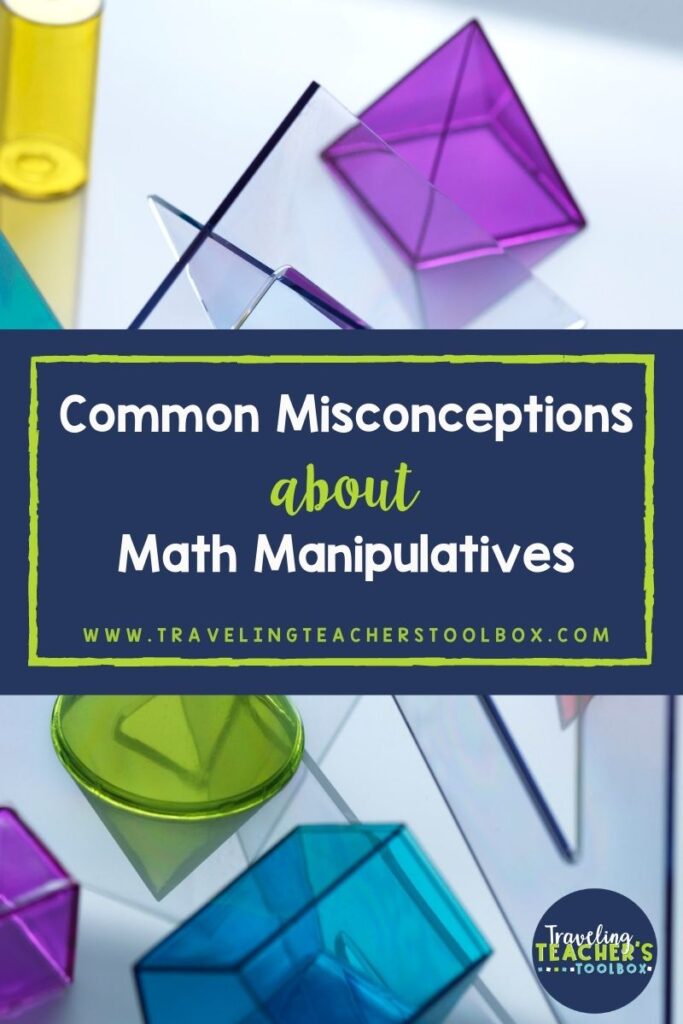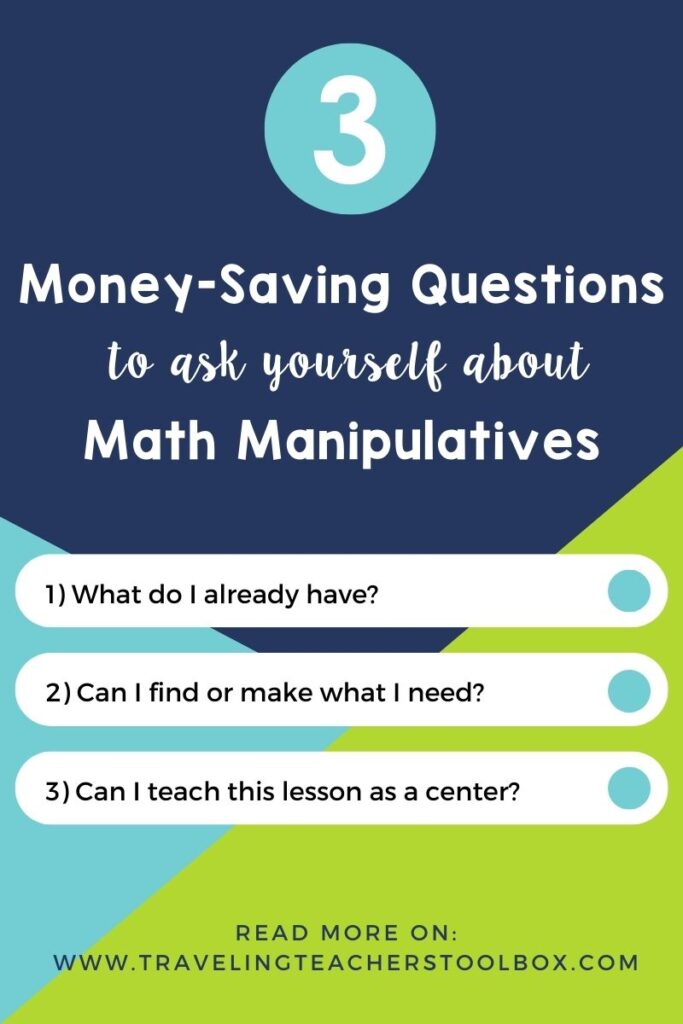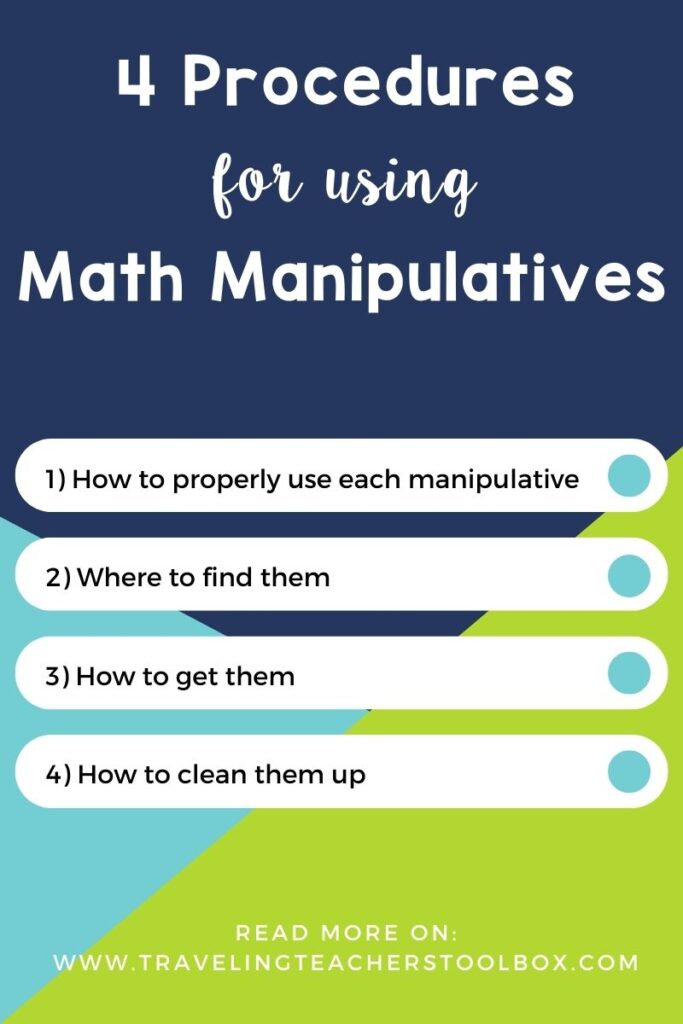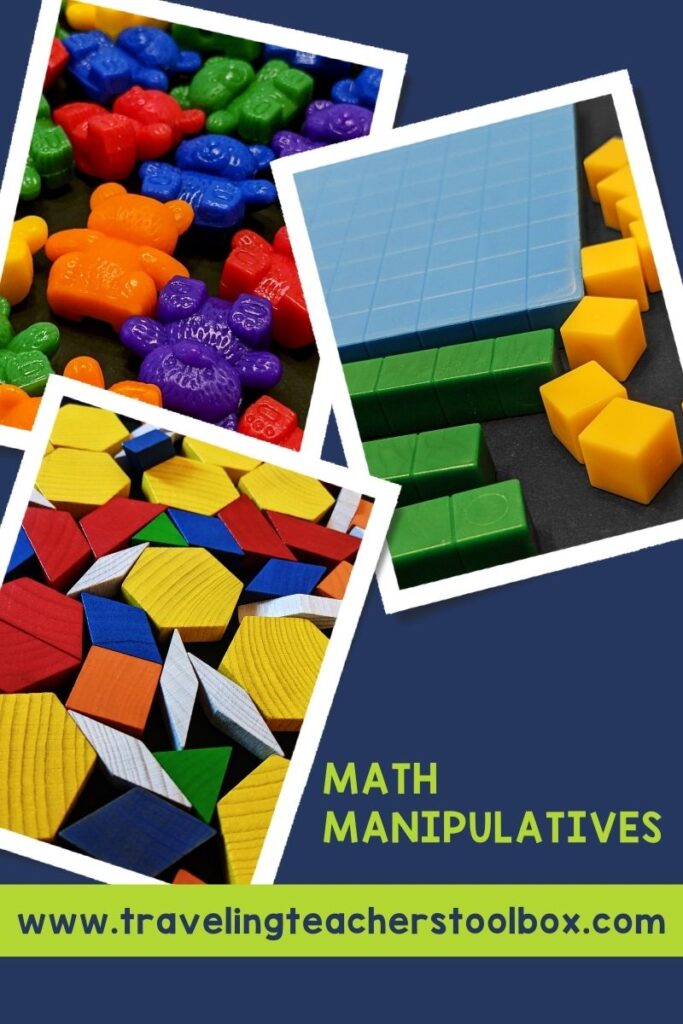The use of math manipulatives creates a powerful learning experience for your students. They help students develop a deeper understanding of math concepts, provide extra practice for fine motor skills, and make math lessons more engaging.

To learn more about teaching math with manipulatives using the CRA math strategy, click here.
Unfortunately, many teachers find the use of math manipulatives to be too expensive or too hard to manage.
Math Manipulatives are Too Expensive
While it is true that purchasing manipulatives for your class can be expensive – you don’t necessarily have to purchase anything at all. You might be surprised at the items you already have, can find, or quickly make that can be used for math manipulatives.

Here are 3 money-saving questions to ask yourself:
- What do I already have?
- Can I find or make what I need?
- Can I teach this lesson as a math center?
What Do I Already Have?
Take some time and do an inventory of what you already have, especially in your art supplies or games. Popsicle sticks, cotton balls, beads, small erasers, playing cards, and dice are all examples of things you might already have on hand.
To find a list of math manipulatives you may already have, click here.
Can I Find or Make What I Need?
Those bear-shaped counters sure are cute, but you definitely don’t need them. You can use pebbles or rocks that you or your students find outside! You can even have students compare their sizes and colors, just like with the bears.
In fact, nature is a great place to find math manipulatives. You could also count twigs or use them to represent tally marks.
Pattern blocks are a personal favorite of mine, but the wooden or plastic blocks are pretty pricey. If you have access to a computer, you can use a word processing program to create the shapes you need. You will need access to a printer and ink, but once they are printed, have the students cut and color them themselves. They will have more buy-in than ever while using them!
Can I Teach This Lesson as a Math Center?
If you are able to find or purchase math manipulatives but don’t have enough for your whole class, utilizing math centers or stations is a great way to reduce the number of materials you need.
For example, instead of needing to purchase 28 sets of something, you only have to purchase 7 to 10.
Although math manipulatives can be very expensive, there is often no need to spend a lot of money on them. You might find you already have what you need!
Math Manipulatives are Too Hard to Manage
Classroom management in general can be a tricky thing to tackle. My philosophy for managing the use of math manipulatives is the same as it is for classroom management: clear procedures and clear expectations from day 1.
Make sure you have procedures in place before students ever touch a manipulative.

Examples of procedures that should be included are:
- What the manipulatives are and how to use them
- Where to find them
- How to get them
- How to clean them up
These procedures might need to be practiced several times before students are able to use manipulatives effortlessly. But the more they are practiced, the better students will be able to manage them.
Different ages will handle things differently and you know your students best. Therefore, procedures will vary between grade levels and classes, but here are some ideas of procedures that you could use:
- Younger Students: You can have the correct manipulatives for the lesson placed in small bins or trays and have a student from each group collect the materials for the group.
- Older Students: You can have a vessel for them to collect their own materials, such as a cup, a tray, or a bin. They can be in charge of collecting what they need and then cleaning up correctly when they are done.
If students are struggling to use manipulatives correctly, stop the group and have everyone start over. While this is time-consuming, if you do it consistently in the beginning, you will be saving so much time and headache later on in the year.
Final Thoughts

While it’s true that you can spend a lot of money purchasing manipulatives for your students, you might be surprised at what you can make or find for free or with little cost.
Managing manipulatives can be challenging, but by setting clear procedures and expectations and allowing students to practice, most students will be able to effectively manage their own materials.
Thanks for stopping by Traveling Teacher’s Toolbox!
